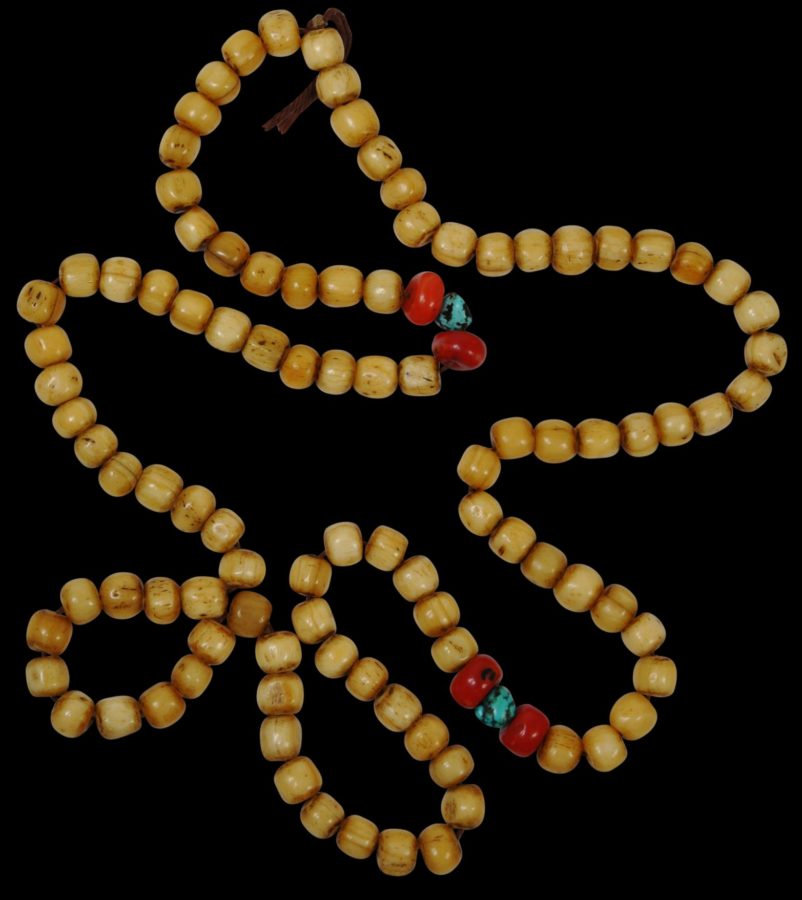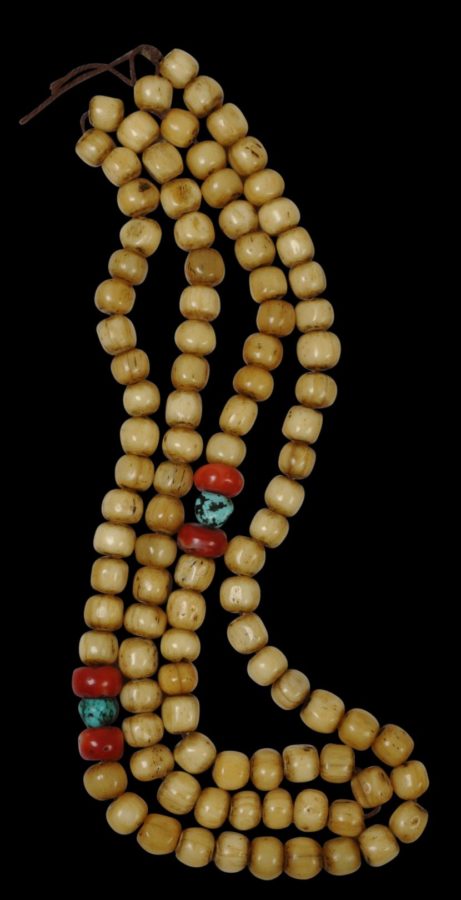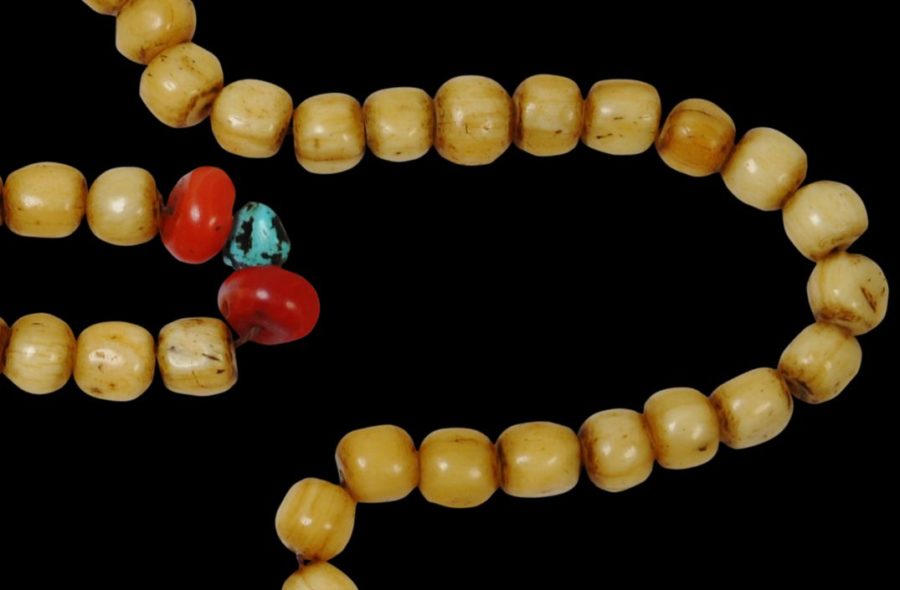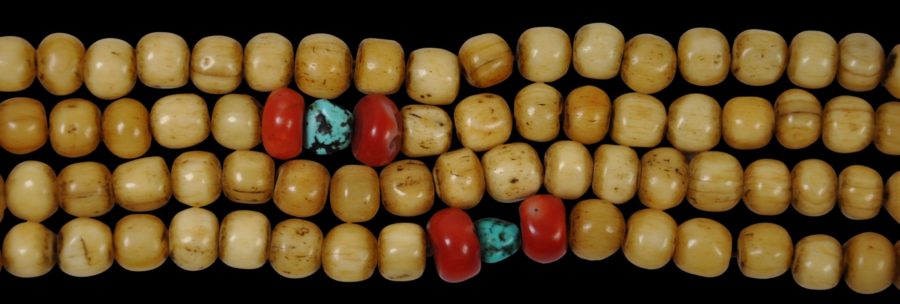This necklace comprises 99 beads of human bone, four beads of coral and two of turquoise. Each bead, and most particularly the bone beads, has the most exquisite patina from age and handling. The bone beads have become beautifully round from handling with their contours being softened by wear and age. They also have developed a deep creamy colour.
It is possible that this necklace was a Buddhist rosary (sin-‘phen). It comprises 105 beads in total so is almost 108, this being the full quota for a complete rosary, and that it is three beads short. Or it is possible, the necklace was simply used as a decorative necklace and so the bead number is correct.
Buddhist rosaries evolved from ancient Hindu-Indian mala prayer beads. In Tibet, they were used by both laymen and monks. They are supposed to comprise 108 beads plus others as counters, although sectarian variants might have as many as 111 beads plus counters. The main prayer beads were used to count repetitions of prayers and the counters were used to record multiples of the main beads, so that thousands of repetitions could be counted.
Tibetan beads made from human bone are relatively rare.
The set here is in a very fine, stable and wearable condition. This is a superb set.
References
Reynolds, V., Tibet: A Lost World: The Newark Museum Collection of Tibetan Art and Ethnology, The American Federation of Arts, 1978.
Sherr Dubin, L., The Worldwide History of Beads, Thames & Hudson, 2009.
Untracht, O., Traditional Jewelry of India, Thames & Hudson, 1997.





